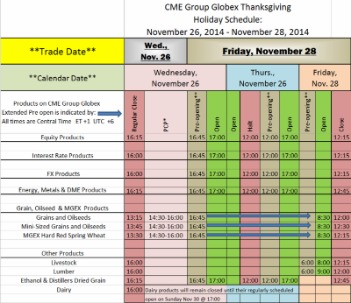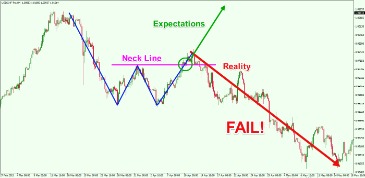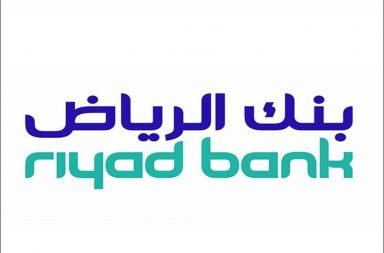Content
A low yuan value is one reason for the large U.S./China trade deficit. The other reason is that China can pay its workers less than U.S. companies can because China’s cost of living is lower. It might have been trying to offset the rising cost of tariffs imposed by President Trump’s trade war. Later that year, the U.S. made its declaration about China being a currency manipulator. Any country that keeps its currency artificially low to boost cheap exports can be accused of currency manipulation. Countries with low currency values export more because their products cost less than their competitors’ products.
Also, high grade paper for the banknotes is produced at two facilities in Baoding and Kunshan. During the summer, Chinese officials made a series of rapid-fire moves, most notably devaluing the currency by 4.4 percent against the dollar as part of a new method for setting the daily trading range of the renminbi. The process would give the market more influence over the daily value of the renminbi, which is set each morning by the central bank. The fund decided https://g-markets.net/ during the summer to stick to more traditional criteria, like the amount of currency that central banks had been able to buy and how easily the renminbi could be traded. After that, the I.M.F. pressed the Chinese central bank to make its currency more responsive to market forces. China’s currency, the renminbi (RMB), had been undervalued for many years with Chinese government’s continual intervention in setting a target rate for currency exchange.
Evolution of Chinese Money
Each mao or jiao (these words are used interchangeably) is worth 1/10th of 1 RMB. How Chinese use mao or jiao in spoken conversation is similar to how you communicate cents in USD. There’s a lot to cover here, but I promise you it’s not as intimidating as it sounds. I’ve been exchanging US dollars into China’s yuan for over a decade now and it’s always been a positive experience. Even the name “renminbi” is hard for a lot of people to pronounce correctly.

When China’s central bank sells Treasurys, it lowers the dollar’s value by increasing the supply of dollar-denominated assets. China’s exporters receive dollars when they ship goods to the U.S. The bank pays them renminbi in return, which they use to pay their workers and local suppliers.
Ancient Chinese Currency Gallery in National Museum of China
The notes remained in circulation as late as 1573, but their printing ceased in 1450. With the collapse of the paper currency system, copper coins were in circulation again. China used bimetallic currency, meaning that both copper and silver were in circulation.

Paying for things in a new currency in a new country can be exciting, but be sure you have a good idea of how much you’re actually paying in your own currency equivalent before you spend. If you look closely at a 1 yuan banknote, however, you will see the characters 壹圆 (yī yuán) under the “1” in the middle to the left of Mao’s portrait. Although they look quite different, the characters 壹圆 (yī yuán) are actually the same as 一元 (yī yuán). Confusingly, however, it’s possible that you may also have heard Chinese money referred to as “yuan” (元 yuán), commonly abbreviated as CNY (“Chinese Yuan”).
China Money Facts
Instead, most people in China refer to their money as “kuài” (块). Today, renminbi is the general name for the Chinese currency, while yuan is the name of a unit of that currency. One way to understand this is to imagine a country that uses gold as its currency. Technically, though, RMB is the name of the Chinese currency (like US Dollar), while CNY is a unit of that currency (like „bucks“ or „dollars“).
- Banknote printing facilities are based in Beijing, Shanghai, Chengdu, Xi’an, Shijiazhuang, and Nanchang.
- If your card is swallowed at a stand-alone ATM in the middle of nowhere, getting your card back will be much more of a headache.
- It also gives the PBOC cash to purchase more yuan, raising the currency’s value.
- In the unlikely event of your card being swallowed, it’ll be much easier to inform staff to get your card back.
The maximum dollar withdrawal is $10,000 per day, the maximum purchase limit of US dollars is $500 per day. This stringent management of the currency leads to a bottled-up demand for exchange in both directions. It is viewed as a major tool to keep the currency peg, preventing inflows of „hot money“. Both the Qing Dynasty and early Republican government circulated silver yuan coins and banknotes. Today, the traditional character for yuan is also used in the currencies of several Chinese-speaking regions, such as the New Taiwan Dollar, the Hong Kong Dollar, the Singaporean Dollar, and the Macanese Pacata.
Paper money was widely used in Yuan Dynasty (1271-1368 CE)
This note features Chinese Communist Party chairman Mao Zedong on the front and various animals on the back. In order to distinguish between the mainland currency with other uses of the word, the modern-day Chinese Yuan uses the abbreviation CNY. Forex brokers, for example, will quote prices with the ticker CNY.
Many central banks follow this benchmark in measuring their reserves, which countries hold to help protect their economies in times of trouble. By adding the renminbi to this group, the I.M.F. effectively says that it considers the currency to be safe, reliable and freely usable. Can central banks trust that Beijing would maintain its commitment to the free flow of foreign capital if it were faced with a major financial crisis?
SInce 2005 the Chinese Yuan started a managed floating exchange rate, so it appreciated around 2.1% against the dollar. A series of movements from the PBC have been occurring then in order to control the oscillation. Since 2014, when the yuan reached an 18-year high, China has been lowering the value of its currency. In 2014, the dollar rose 15% against most major currencies, dragging the yuan up with it. As a result, the yuan was overvalued compared with other trading partners not pegged to the dollar.
Such countries can increasingly carry out transactions in renminbi. While the renminbi may gain favor internationally, the I.M.F. designation does not mean that China’s economic overhaul is complete. China maintains heavy regulatory control over the country’s financial system. The country also falls short in legal protections, with the Communist Party continuing to play a strong role in deciding court cases.

Since 2005 the Chinese Yuan is not pegged to any other currency and is on a floating exchange rate. A floating exchange rate is when a nation allows the value of its currency to be dictated, to some extent, by supply and demand. Due to the Chinese economy being largely based on exports, their currency remains strong.
The Kaiyuan Tongbao inscription inspired coins in other Asian countries like Japan, Korea and Vietnam. The last coins bearing the “Tongbao” inscription was cast in the 1940s in French Indochina (nowadays Vietnam, Laos, and Cambodia). You’ll always get the real exchange rate with no hidden costs, and you’ll avoid foreign transaction fees while withdrawing from ATMs abroad, paying in restaurants and shops, and buying your accommodation and flights. This includes a detailed explanation of what Chinese currency is called as well as the available bank notes and coins. In 2015, the International Monetary Fund (IMF) designated the yuan as an official reserve currency. As China relaxed controls, the yuan experienced greater market volatility.
Sign Up for a Free Lifetime Account and Get 7 Days of Premium Access. Once you’ve got your renminbi in hand, be sure to take some time to examine it and think about its history, its future and all the different ways there are to refer to it in both English and Chinese. If you are traveling to China for the first time, you might be wondering whether or not to bring any cash.
